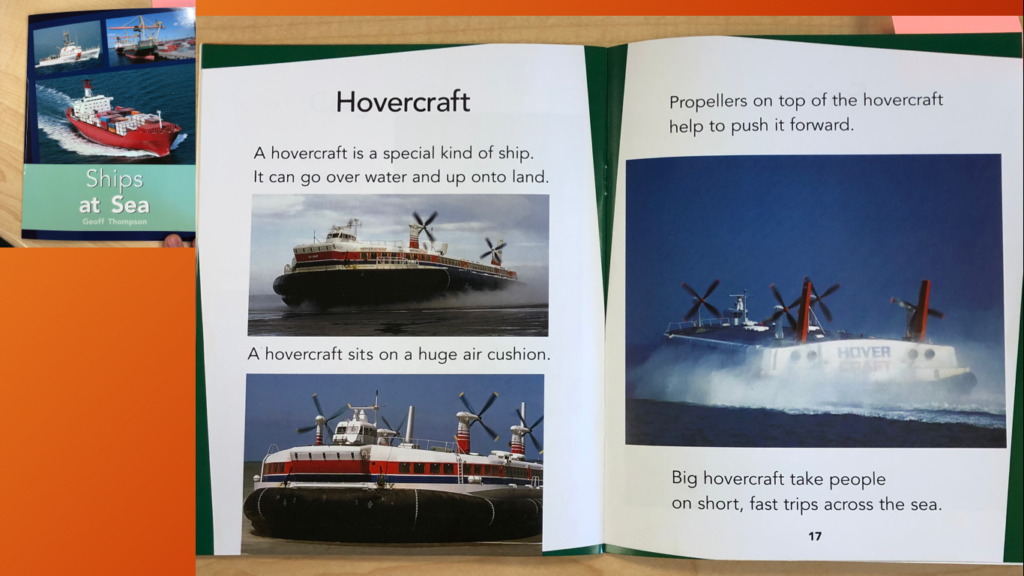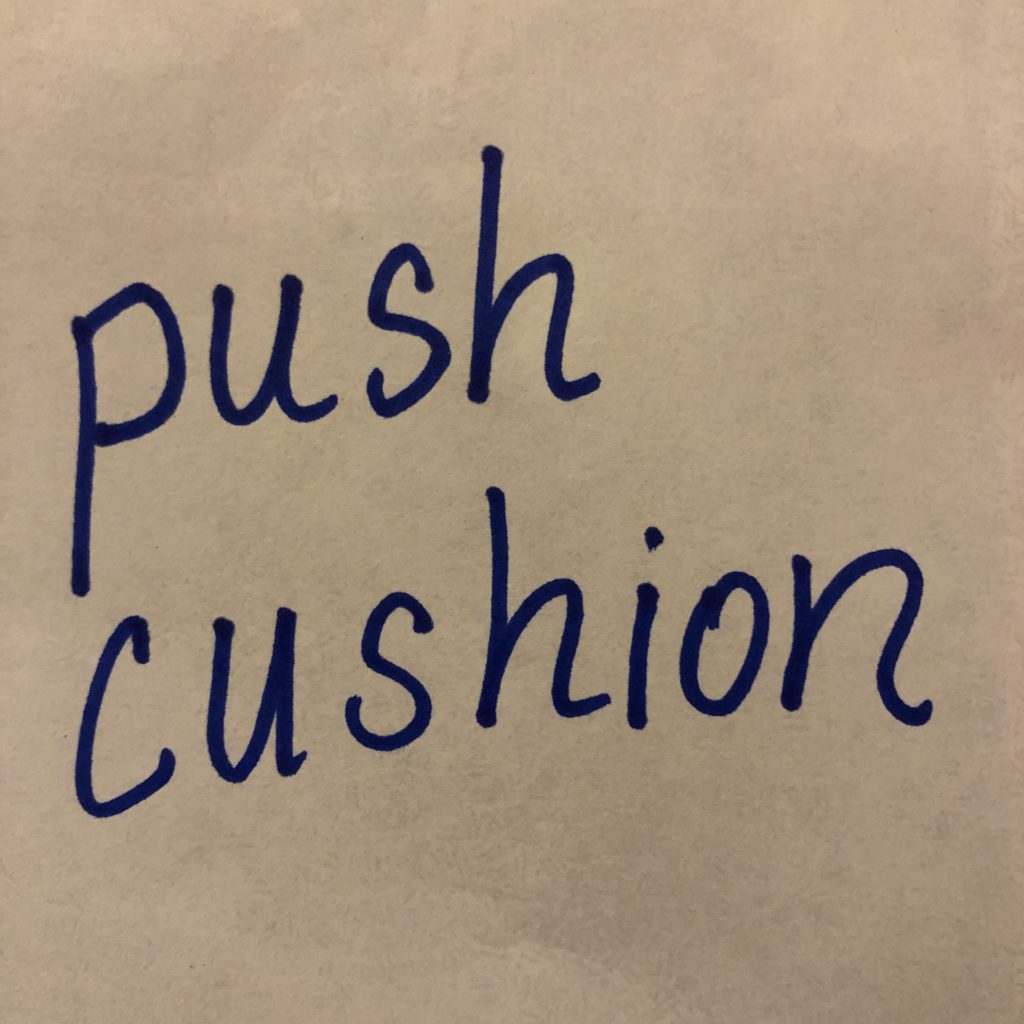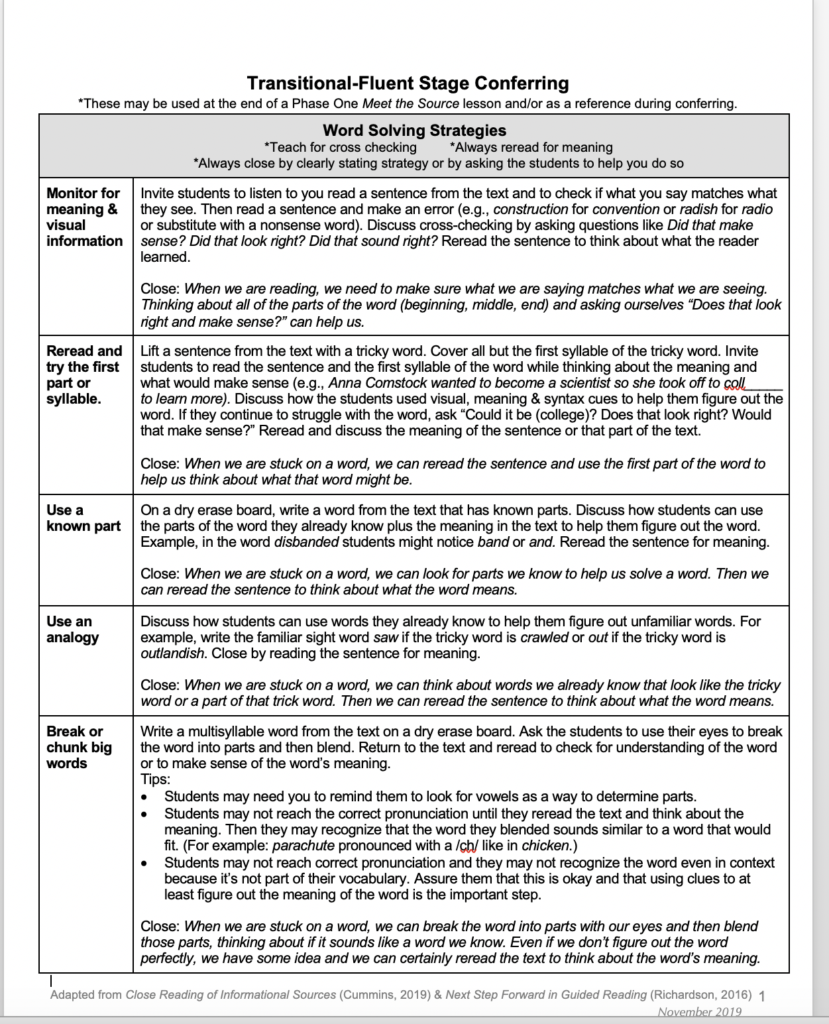
Our students may need a reminder to use multiple sources of information to figure out a word – meaning cues (context & pic clues), visual cues (the letters in a word), and syntax cues (how the language sounds). They may need to learn to ask questions like:
- Does that make sense?
- Does that look right?
- Does that sound right?
Sample Conference

In the book Ships at Sea (Geoff Thompson, Rigby Readers), a student read aloud the page (in the image above) entitled “Hovercraft.” He paused at the word “cushion.” He looked at the photograph (of a hovercraft sitting on what looks like a black inflatable tube). Then he substituted the word balloon for cushion. THAT’S FANTASTIC! He used meaning, right? But he also needs to use other sources of information – like the letters in the printed word 😉
The teacher affirmed his use of meaning (clues in the photo) to help him figure out that word and then asked, “Does that look right, though?” The student shook his head. “What can you do?” the teacher asked. The student read the sentence again “A hovercraft sits on a huge air” and pronounced the u in “cushion” like the short u in lush or cut. We affirmed the student’s use of visual cues and asked, “Does that sound like a word you know?” He shook his head.
Then I wrote the word “push” on a dry erase board – a word he immediately recognized. I encouraged him to use push to help him pronoun cush in cushion. He did. “Does that sound like a word you know?” He nodded. “What does it mean?” He thought for a moment and said, “A cushion is like something you sit on.” “Yes!” And then we discussed how a cushion is usually something soft you sit on. “Read that sentence again. What does the word cushion mean in this sentence?” He did and we discussed a bit further.

I recapped, “So you tackled that word, huh? You looked at the parts and thought about a word you knew that looked like a part of this word. After you figured out the word, you reread the sentence and thought about what the word meant! That’s going to help you understand the text better.” (In the future, the student needs to do the recapping!)
When they’ve never heard the word before
Frequently words that are tricky for transitional readers are not in their vocabulary–especially with emergent bilinguals. Hold the reader accountable for attempting to read the word and then help as needed. The biggest move you need to make, though, is going back and thinking about the meaning of that word. Even if they can’t read the word perfectly, they can still make sense of some meaning which moves their learning forward.
While reading a short essay by Temple Grandin, a sixth grade student got stuck on the word “epiphany.” After helping him break the word apart and tackle it to some extent, the teacher and I told him the word. (Notice – we still held him accountable for what he could do to decode the word by looking at parts and thinking about other words with similar parts.) The important move we made was asking him to reread and make sense of the meaning of that word which we did in a shared think aloud with him. A student may not get to the perfect pronunciation of the word, but they can still try to make sense of the meaning of the word.
With emergent bilinguals
For our emergent bilinguals, it may not be fair to say, “Does that sound right?” or “Does that sound like a word you know?” We can still hold them accountable for tackling the word in some way. Even if they got as far as “cush” that sounds like “lush,” that would be closer than “balloon.” With these students, if you assess that “cushion” is not in their vocabulary (maybe they shake their head when you ask) affirm what they did to tackle the word, practice pronunciation, and then teach the meaning of this word explicitly or use context clues in the text.
If you’re looking for more tips on students word-solving, check out this blog entry about helping students who “mumble” read words they don’t know while hoping you don’t notice! And below is a one-pager you can download with examples of teaching points.

Hope this helps.
S
UPDATED 2/19/2021
